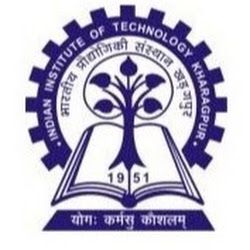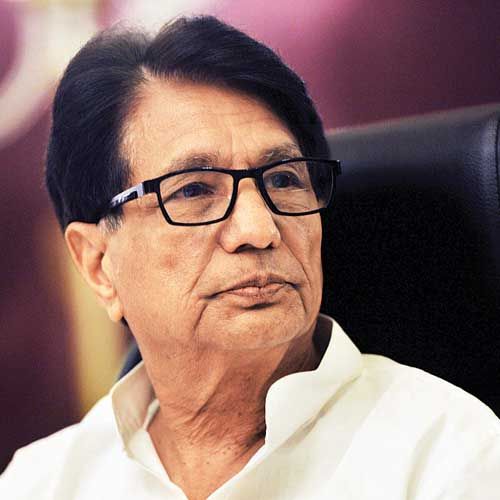

IIT Kharagpur explores research in Emerging Areas of Energy
‘International Conference on “21st Century Energy Needs – Materials, Systems and Applications 2016’
Tuesday November 22, 2016,
6 min Read
There have been continuous debates on energy efficiency and move to alternate forms of energy resources. The concern seems very much relevant in the context depletion of fossil fuel reserves and global warming due to fossil fuel burning. It is even projected that may be completely depleted within next 50-75 years. Nuclear energy does not have gaseous pollution, but apart from apprehension of safety issues, nuclear waste poses serious health hazard. The resolution here is Renewable Energy sources, but such sources have low energy density thus generating less amount of power. Cost effective technologies are essential to fully exploit different sources of renewable - solar, wind, biomass, etc. Fast growing centralized and decentralized renewable energy production has put demands on energy storage and distribution.
Exploring emerging areas of energy is the dire need of 21st century especially in a country like India which has specific target of industrialization and urbanization coupled with energy efficiency. Keeping this in mind the School of Energy science & Engineering (SES&E) of IIT Kharagpur along with IEEE Kharagpur Section orgainized the International Conference on 21st Century Energy Needs focused on Materials, Systems and Applications related to the field during Nov. 17-19, 2016. The conference aimed to discuss the different challenges and prospects of different energy production processes such as, Solar Photovoltaics, Solar Thermal, Wind Energy, Bio Energy, Electro Chemical Energy, Electrical Energy & Smart grid, Mechanical Energy, Energy Storage, Conventional Energy, other Renewable and Non-Renewable Energy Related Areas. The conference partnered with ISRO, WBSEDCL, CESC, SUNCRAFT Energy, Edutek and Office of Principal Scientific Adviser to the Govt. of India.
The Conference was inaugurated by Dr M Ramamoorty, FIEEE, Chancellor KL University Guntur AP, Former and Founding Director General of Central Power Research Institute under Min. of Power. He is leading father figure of Electrical Power Engg. in the Country. He started his career as a Faculty member at IIT Kanpur. He was first person to introduce Power Electronics in the teaching Curiculum in the country. He reemphasized the need and importance of Renewable Energy resources like Solar, Wind, Hydro, Tidal, Bio-Mass etc in view of fast depleting fossil fuel sources such as coal, petroleum etc ; which are primary sources for Thermal Power Generation. He, in fact traced back how Renewable resources were used from the beginning of Human Civilization. He also laid emphasis in terms of use Electricity is the best and cleanest form of Energy. He reviewed the whole electricity generation scenario of the country and whole Community is working towards national motive of Power for All together with an emphasis on Energy Efficiency.
Professor Sriman Kr Bhattacharya, Deputy Director (Acting Director on that Day) welcomed the delegates. He said all study of Science, Engineering and Technology is essentially study of Harvesting Energy for Human Development. Being a Structural Engineer he elaborated increased need for building construction to take care of increasing population leading to increased energy demand necessitating the energy efficiency measures in all walks of life.
Among the low-cost renewable energy, much emphasis was given on solar power. Dr. Arul Shanmugasundram Executive VP & CTO of Tata Power Solar Systems Limited spoke about innovative and new solar cell technologies such as light trapping, CIGS and BiFacial HIT etc. which have an impact on the system yield as well as the cost of the entire module. Solar cells comprise a lot of variable factors, where addition or deletion of these factors, help driving the cost effectiveness of solar cells along with improving the efficiency. Prof. Hiranmay Saha, a Chair Professor in the Centre of Excellence for Green Energy and Sensor Systems at IIEST, Shibpur spoke about Grid Connected Solar Power Plants in India which are doing wonders from less than 100 MW installation in 2010 to more than 6000 MW in 2016 and very relevant in the context of the recent commitment of India in Paris Agreement. He talked about the falling price of the components required for Grid Parity in Solar Parks in many states. Introduction of new processes and technologies have made solar power unit cost even lower than thermal power electricity unit cost in many cases.
Another mechanism which was highlighted was hydrogen fuel. Dr. Debabrata Das, Professor at IIT Kharagpur talked the humongous rise in world energy consumption expected by 2030 and Hydrogen being considered as a fuel for the ‘‘future’’ because it has the highest energy density. In this scenario the Govt. of India has already developed hydrogen road map for India. IIT Kharagpur has bioreactor has been installed to produce hydrogen continuously from the organic wastes like distillery effluent. Hydrogen is also found suitable as a fuel in cars and all the major car companies are in competition to build a commercial car.
Apart from there was discussion on the feasibility of production of liquid fuel from renewable raw materials and improvement of the efficiency of the wind turbines.
Mr. Rajesh Pandey, a member of the Indian Administrative Service spoke about the initiative on Promotion of Energy Efficiency. WBSEDCL, being the State Designated Agency (SDA) on behalf of Bureau of Energy Efficiency (BEE), Govt. of India, has taken several initiatives for energy conservation, Agricultural Demand Side Management and energy Conservation Building Code-2016. One of the major tasks is to match demand and supply for which WBESDCL has been very successful utilizing 900MW capacity Pumped storage plant at Purulia The other major initiatives which WBSEDCL is now tasked b the state Government is set up more megawatt scale of the solar power plants.
Dr. Subir Sen, COO for CTU Planning and Smart Grid in Power Grid Corporation unveiled the plans of the government to provide 24x7 Power for all (PFA) by 2019 with quality and affordability in a sustainable and environment friendly manner. Towards this, a very aggressive renewable energy addition programme of 175 GW by 2022 including 100 GW of solar, 60 GW of wind and about 15 GW of other forms of RE Generation is being implemented.
The conference ended with a Valedictory Talk by Professor Bhim Singh, DEAN (Academic), IIT Delhi talking Renewable Energy Conversions issues in Hydro Generation. He also addressed design, development of Power Electronic Convertors a must for Renewable Energy Based power sources be it Solar or Wind.



